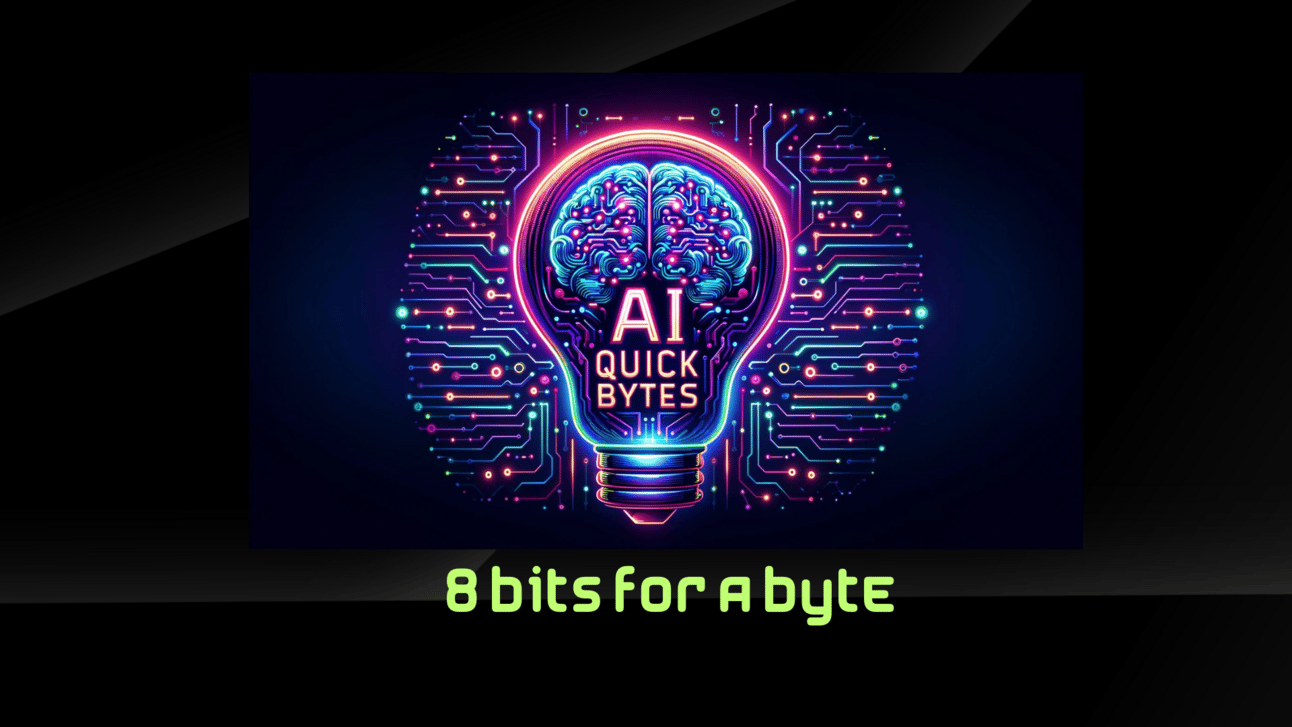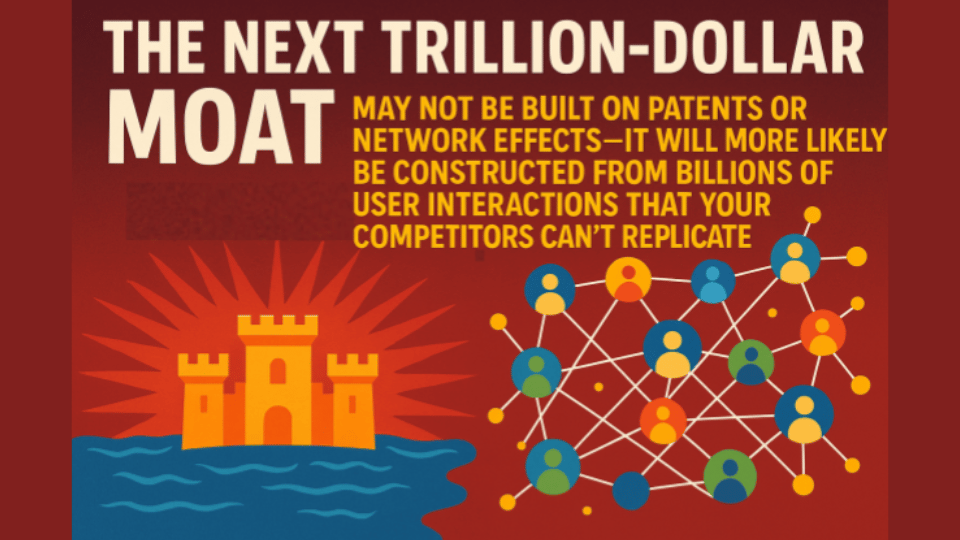Welcome to 8 bits for a Byte: The AI economy waits for no one. Product managers and designers who embrace AI’s potential are already pulling ahead. From smarter product discovery to actionable risk assessments, we’re serving up the strategies you need to lead with confidence. And if you’re curious how AI is shaking up EBITDA and salary costs? We’ve got the numbers. Keep reading — your AI leadership playbook starts now.
Looking for unbiased, fact-based news? Join 1440 today.
Join over 4 million Americans who start their day with 1440 – your daily digest for unbiased, fact-centric news. From politics to sports, we cover it all by analyzing over 100 sources. Our concise, 5-minute read lands in your inbox each morning at no cost. Experience news without the noise; let 1440 help you make up your own mind. Sign up now and invite your friends and family to be part of the informed.

Let’s Get To It!

Welcome, To 8 bits for a Byte!
Here's what caught my eye in the world of AI this week:
This article by Marty Cagan and Bob Baxley emphasizes the distinct and essential roles of product managers and product designers in creating successful AI products. Product managers focus on ensuring solutions are valuable and viable, while product designers concentrate on crafting strong user experiences. Together, they form a cross-functional team that collaborates during product discovery to meet customer needs effectively.
Strategic AI Leadership in Product Management & Design
1. Role Clarity in the Era of Generative AI
Generative AI increases the importance of clearly defined roles of Product Managers and Product Designers.
Product Managers ensure value and viability of AI-driven products.
Product Designers ensure the usability and user experience of AI interfaces.
2. AI-Enhanced Product Discovery
Product discovery now benefits immensely from generative AI tools, which rapidly create live-data prototypes within minutes/hours.
AI prototypes allow quick exploration of solutions, improving assessment of:
Usability (Can users effectively interact with AI-generated interfaces?)
User Value (Will users choose to engage consistently?)
Customer Value (Will customers pay for the AI-powered solutions?)
Business Viability (Are AI solutions compliant with internal and external business constraints?)
Technical Feasibility (Can solutions leveraging generative AI be realistically built?)
3. Essential Skills for AI Product Managers
Deep customer insight: Understanding precisely how customers interact with and derive value from AI products.
Data expertise: Proficiency in interpreting user-engagement data and AI impact on business KPIs.
Market & competitive analysis: Anticipating how generative AI shifts competitive dynamics.
Business acumen: Aligning AI products with complex internal business constraints (legal, compliance, finance, sales).
Technical fluency: Sufficient understanding of AI capabilities to guide viable solutions.
4. Essential Skills for AI Product Designers
Strong Service Design skills: Crafting seamless, coherent user interactions across AI-powered digital touchpoints.
Expertise in Information Architecture: Structuring AI-driven information clearly, intuitively, and logically.
Proficiency in Interaction Design: Designing intuitive human-AI interaction flows.
Mastery in Visual Design: Presenting AI-driven interfaces that foster trust and usability.
Understanding of AI-enhanced User Research methods: Qualitative insights to refine user-AI interactions.
5. AI Prototyping & Iterative Solution Discovery
AI dramatically reduces the time from conceptualization to actionable prototypes, making iterative solution discovery faster and more accurate.
Rapid prototyping helps teams quickly discard poor or non-viable AI product ideas, saving significant time and resources.
6. Empowered Cross-Functional AI Product Teams
Effective AI product teams require deeply empowered Product Managers, Designers, and Technical Leads.
The intersection of these roles—leveraging "strong product sense," "strong design sense," and "technical feasibility"—ensures generative AI products are valuable, usable, viable, and feasible.
7. The Role of AI Tools in Enhancing Product & Design Sense
While generative AI accelerates both discovery and delivery, the underlying requirement is stronger product/design judgment, not just tooling.
Teams must prioritize upskilling in strategic thinking around AI—not just technical proficiency with tools.
Conclusion & Strategic Imperatives
The real opportunity of generative AI in product development lies not in faster coding or designing, but in rapidly identifying and refining "the right product" through disciplined discovery.
Enterprises should prioritize building strong AI product & design sense among product teams to leverage AI for sustained innovation and business growth.

Quote of the week

As W. Edwards Deming famously asserted, "In God we trust; all others bring data." Deming, an extraordinary pioneer and visionary, was truly ahead of his era, intuitively grasping the immense potential and necessity of data long before the digital revolution unfolded. Even Deming himself likely never imagined the astonishing magnitude with which data would become the defining currency of our 21st-century society—powering our economies, guiding strategic decisions, reshaping global industries, and ultimately transforming the trajectory of humanity. Today, as we stand at the precipice of an ever-evolving, data-driven future, we honor his foresight and wisdom by harnessing the transformative power of data to innovate, illuminate, and elevate our collective future.

In the AI economy, the value of a company may come from user interactions rather than traditional moats like patents. This usage data can create a feedback loop that enhances product performance, making it hard for competitors to catch up. Companies that leverage this data effectively could gain a significant advantage in their markets.

Willem Koenders has developed a consistent framework for data governance that he has used across various industries. This framework includes five key components: strategy, capability areas, implementation, technology enablement, and governance of governance. Establishing this framework early helps organizations understand and adopt data governance effectively.

Come for the news, stay for the laughs
Morning Brew isn’t just any newsletter—it’s your free shortcut to business news that actually matters. Fast, fun, and—dare we say—enjoyable.
No fluff, no jargon, and it takes less time to read than it does to brew your coffee (unless you’ve got a Keurig—then you might get to enjoy your Morning Brew with your actual brew).
Join over 4 million professionals who read it daily. Delivered bright and early, it’s news on your time—whether you read it when you wake up, over lunch, or before bed.


Sam Burrett emphasizes the importance of Responsible AI Risk Assessments and shares seven free assessment templates from various organizations. These templates help evaluate the impact and risks associated with AI systems. He invites readers to comment "RAI" for a checklist of key requirements for these assessments.

Friday Funnies 🤣 .



KPMG analyzed over 17 million companies and found that generative AI could increase earnings and productivity by 4-18% of EBITDA and 19-23% of salary costs. The potential benefits vary by sector, with Professional Services seeing the highest impact. Executives are eager to invest in generative AI but struggle to measure returns and set realistic goals.

Start learning AI in 2025
Keeping up with AI is hard – we get it!
That’s why over 1M professionals read Superhuman AI to stay ahead.
Get daily AI news, tools, and tutorials
Learn new AI skills you can use at work in 3 mins a day
Become 10X more productive


While organizations often focus on technical models and frameworks when deploying generative AI (GenAI), the most significant challenges are often human-centric. Misaligned executive expectations, resistant subject-matter experts (SMEs), and siloed teams frequently hinder successful AI adoption. This article provides actionable strategies to address these barriers and ensure AI initiatives deliver real business value.
Key Challenges and Solutions
Misaligned Executive Expectations: Unrealistic demands and skepticism can derail projects. Conduct early alignment sessions and set clear, measurable goals.
Siloed Teams and Poor Communication: Cross-functional collaboration is essential. Establish integrated teams and prioritize transparent communication.
Resistance from SMEs: Fears of job loss and concerns over AI replacing expertise can create pushback. Engage SMEs early, highlight their role in enhancing AI outcomes, and implement change management strategies.
Conflicting Evaluation Metrics: Data scientists, engineers, and business leaders often have differing priorities. Develop shared evaluation frameworks that balance technical accuracy with business impact.
Actionable Recommendations
Align Executive Buy-In: Conduct strategic briefings to align leadership on realistic AI goals and expectations.
Create Cross-Functional Teams: Form squads of SMEs, engineers, data scientists, and business leaders to foster collaboration and ensure alignment.
Engage SMEs Early: Establish SME champions and involve them in design, training, and evaluation to mitigate resistance and improve model outcomes.
Standardize Evaluation Metrics: Develop a unified set of evaluation criteria across functions to ensure AI effectiveness aligns with business goals.
Implement Continuous Education: Provide tailored training to bridge knowledge gaps and improve AI literacy across the organization.
By prioritizing human factors and fostering collaboration, organizations can overcome GenAI deployment challenges and achieve meaningful, scalable AI impact.

Until next time, take it one bit at a time!
Rob
Thank you for scrolling all the way to the end! As a bonus check out —>
Tim Vipond explains how to create effective strategies using the Hypothesis-Based Strategy Formation framework. This method combines a top-down approach for developing clear objectives and hypotheses with a bottom-up approach for analyzing data. It helps turn insights into actionable strategies, ensuring decisions are based on tested hypotheses and validated data.
P.S.
Join thousands of satisfied readers and get our expertly curated selection of top newsletters delivered to you. Subscribe now for free and never miss out on the best content across the web!










